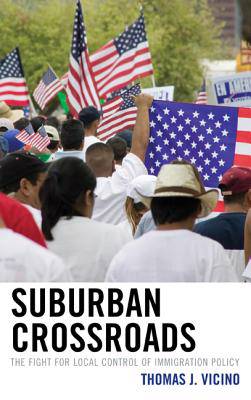
- Afhalen na 1 uur in een winkel met voorraad
- Gratis thuislevering in België vanaf € 30
- Ruim aanbod met 7 miljoen producten
- Afhalen na 1 uur in een winkel met voorraad
- Gratis thuislevering in België vanaf € 30
- Ruim aanbod met 7 miljoen producten
Suburban Crossroads
The Fight for Local Control of Immigration Policy
Thomas J Vicino
Paperback | Engels
€ 101,95
+ 203 punten
Uitvoering
Omschrijving
In fear of becoming havens for illegal immigrants, numerous local communities adopted and implemented their own immigration laws during the 2000s. Suburban Crossroads chronicles the debates and policy responses that emerged over laws like the Illegal Immigration Relief Act, and then evaluates the future prospects for suburban growth and decline.
Specificaties
Betrokkenen
- Auteur(s):
- Uitgeverij:
Inhoud
- Aantal bladzijden:
- 222
- Taal:
- Engels
Eigenschappen
- Productcode (EAN):
- 9780739197271
- Verschijningsdatum:
- 23/05/2014
- Uitvoering:
- Paperback
- Formaat:
- Trade paperback (VS)
- Afmetingen:
- 152 mm x 226 mm
- Gewicht:
- 340 g

Alleen bij Standaard Boekhandel
+ 203 punten op je klantenkaart van Standaard Boekhandel
Beoordelingen
We publiceren alleen reviews die voldoen aan de voorwaarden voor reviews. Bekijk onze voorwaarden voor reviews.










